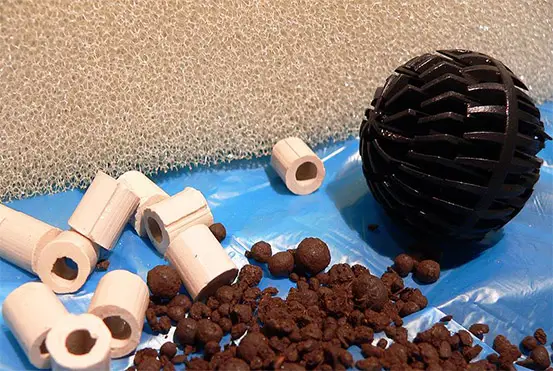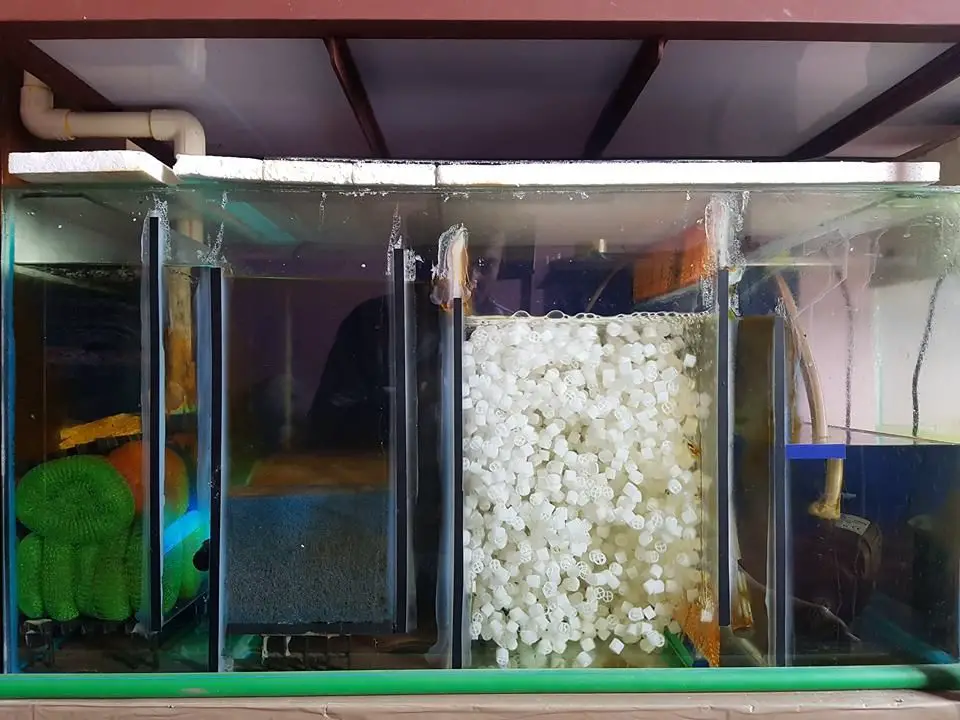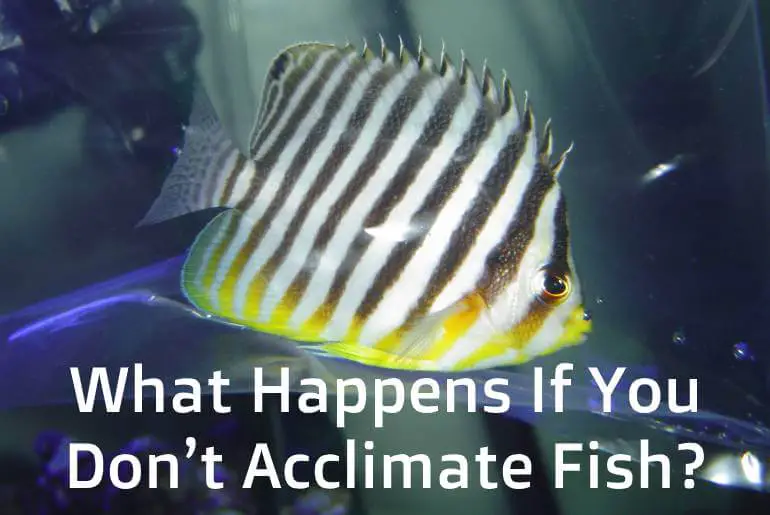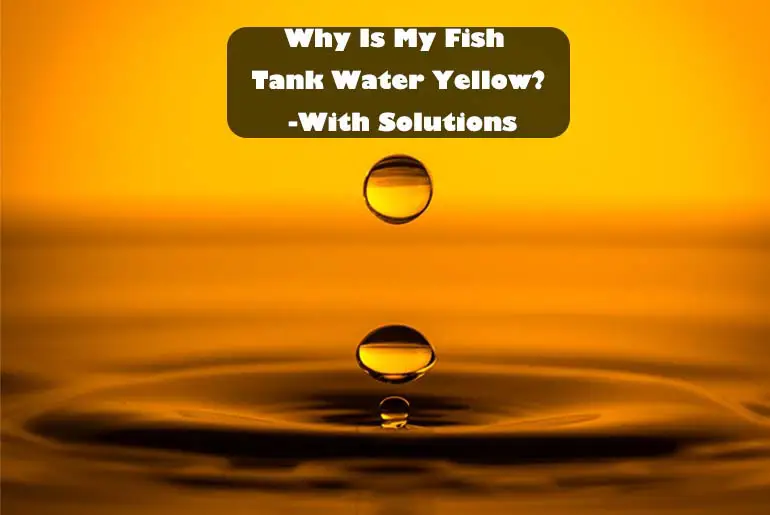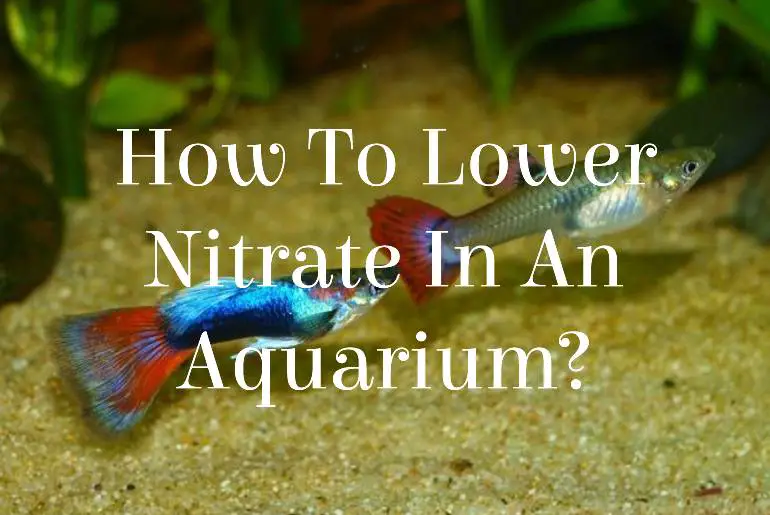Every fish tank needs a filtration medium to clean the water. And each of the filters, may it be a simple sponge filter or a Hang on the back filter or a canister filter or an advanced filter sump filter, needs filter media in it. The purpose of a filter in the fish tank is to eliminate fish waste, excess food, floating dirt particles from the tank water. Filtration is necessary for every aquarium type because it keeps the water clear and keeps the inhabitants healthy and safe. One of the most common topics that come up repeatedly is the types of aquarium filter media and the order of placing media.
There are primarily three types of aquarium filter media that are used to carry out filtration in an aquarium. This includes Biological Media, Mechanical Media, and Chemical Media, each serving a different but vital purpose.
The Three Aquarium Filter Media Type:
Biological Media:
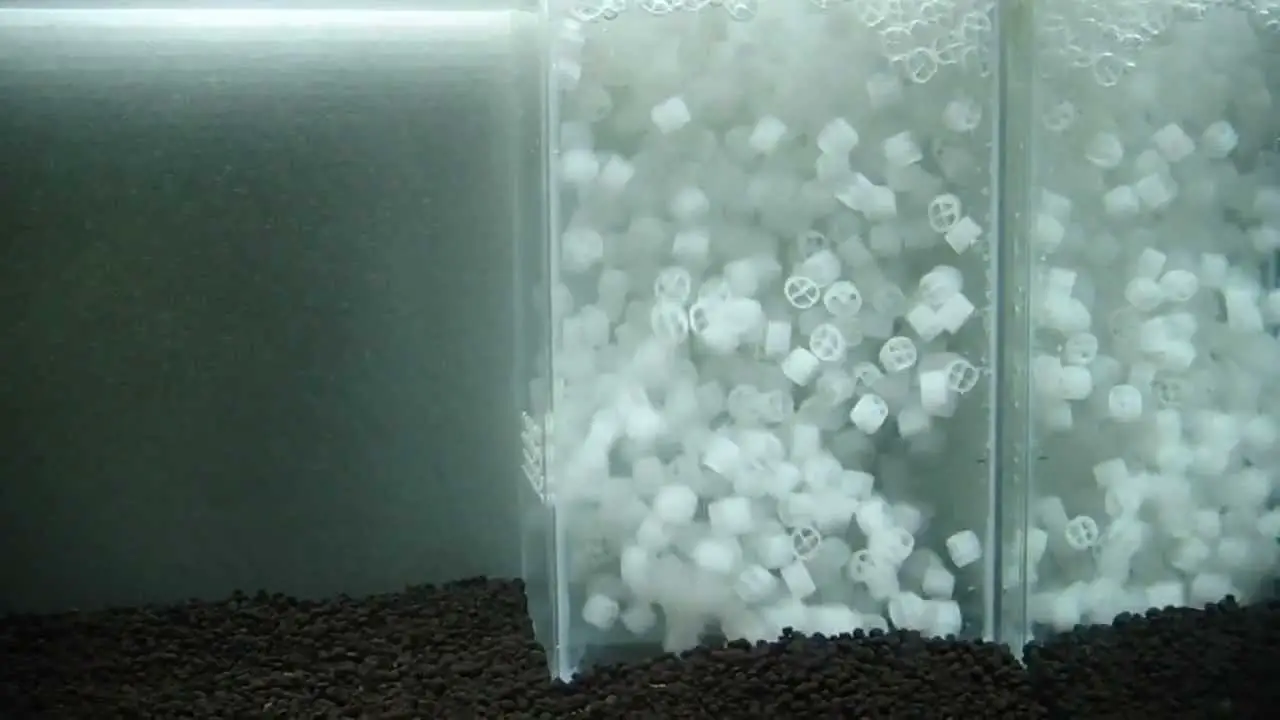
One of the best types of filtration media is Biomedia or Biological Media. Biological media is placed after the mechanical filter media and before chemical media. This is because bio-media houses beneficial bacteria or nitrifying bacteria that help breaking down dissolved solid waste into a less toxic form. Therefore the media must not be clogged.
The media provide a physical surface for the bacteria to grow on. If your bio-media is clogged, oxygen flow will be impeded, risking the beneficial bacteria dying.
Also, all of the fish tanks require at least one of the type of biological media to house beneficial bacteria in it, and most of the filter nowadays comes with biological media in it.
The bacteria can grow on any surface but don’t simply spread out throughout the tank. Nitrifying bacteria tend to grow on the surface where there are most food and oxygen, which means where there is the most flow, i.e., in the filter.
In general, you should never need to replace your media. But, you must clean biological media minimally, just enough to remove all the visible debris. The older your media is, the better it will filter your tank water.
EHEIM Substrat Pro Biological Filter Media
Learn the biological filtration in more detail in our article: The Aquarium Nitrogen Cycle.
Some of the types of biological media are:
K1, k2 medias
Bio-ball
Foam
Ceramic rings
Mechanical Media:
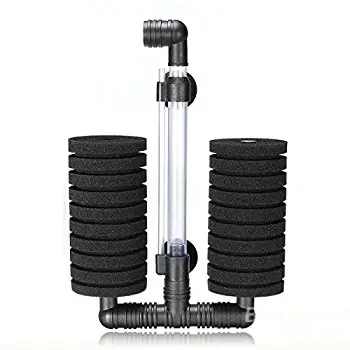
When you are using the sump filter or the canister filter, the mechanical filter is the first media that you will be placed in your filter. Mechanical Media the other aquarium filter media type that is the simplest one. But, one of the most common ones among other filter media. It involves passing tank water through mechanical filters (any type of filter) that acts as a strainer to catch dirt particles that are present in the water. Thus, this filter media removes large particles from the water preventing these particles from clogging the biological media. There are various types of mechanical media. Finer the quality of media, the more waste particle it can trap.
The mechanical media simply makes your work a little easier. It helps you collect debris and particulate waste, and your job as an aquarist is to remove it from the system. If you don’t remove the waste, it will simply rot, degrading your water quality and risk your fish life.
Some of the types of mechanical media are:
- Sponge
- Filter Pad
- Gravel
- Filter Floss
- Foam block
Blue ribbon Polyester Floss Bag
Aqua-Flo 12″ Pond & Aquarium Filter Media
Chemical Media:

Chemical Media is the other aquarium filter media type that is used in extreme cases or at the beginning of fish keeping when you need to boost up the nitrogen cycle in your tank. We use chemical filter media to remove toxins and poisons from the fish tank. Hence, your tank water becomes healthier for your fish. The most common chemical media is using activated carbon, usually included in all filters. Carbon is very effective at removing toxins, odds, discoloration from the tank water. Since the carbon absorbs or removes the chemical from the tank’s water, it should not be used when your fish is sick because it absorbs medicine too.
The reason behind the chemical filter to be placed after the biological filter is due to the reason that the media removes any odds or toxins. As the bio-media bacteria feed on toxins like ammonia and nitrite, placing the chemical media before bio-media prevents the food from reaching the beneficial bacteria. As a result, bacterial colonies will be less likely to thrive in bio-media.
Some of the types of chemical media are:
- Activated carbon
- Granular Ferric Oxide (GFO)
- Poly-Filter
- Crushed coral
- Seachem Purigen
- Ammonia chips: Fluval Zeo-carb
Aquarium Filter Media Order
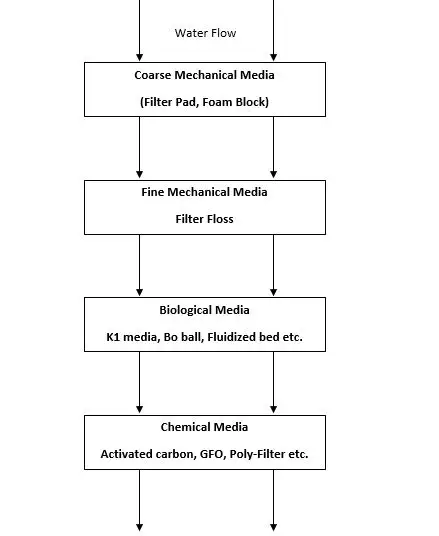
Water in the filter should go through the following order may it be a canister filter or a sump filter:- Coarse Mechanical Media, File Mechanical Media, Biological Media, and Chemical Media.
In an aquarium filtration system, all three aquarium filter media are recommended. But, a fish tank at least requires mechanical media and biological media. Furthermore, the media in a filter must be arranged in the order as shown in the picture. By placing fine Mechanical media before biological media, you prevent those media from being clogged by the fine particulate waste; thus, you get a great filtration in your aquarium.
Types of Biological Filter Media: Top 6
Here are the top six best biological media options if you are having trouble narrowing it down on your own. You can cross-reference the options below and choose the best for your aquarium.
Biohome Ultimate Filter Media
The Biohome Ultimate Filter Media is one of the most dependable and preferable filter media for any aquarium. I recommend this for many people because you do not have to worry about the type of filter installed in your aquarium. This media goes with any type of filter without any problem.
In addition to the ease of use, the bio-home filter media also does not affect or endanger your aquarium species. The reason that there is no adverse effect on your species is because of its toxic-free nature.
The biohome filter media comprises nooks and crannies. These play an important role in building a stable habitat for good bacteria colonies. To add, the media is also interchangeable for the optimum utilization of the marine in the freshwater tank. You will not be able to wash the biohome media easily as well.
Furthermore, you can use biohome media in multiple ways. For instance, you can use the media in a drip system that carries the media inside the filter. You will also be able to utilize the media in tiny sponge filters and the aquarium substrate.
Now, let us look at some pros and cons of using this filter media.
Pros:
- This can help your tank water free from any pollutants and foul odor.
- Boosts the life and health of the beneficial bacteria
- A suitable choice for aquariums consisting of more than 30-gallons.
- Controls the nitrite, ammonia, and other toxins effectively, instantly, and efficiently.
- Able to work with many filters such as sump filter, HOB, canister filters, etc.
Cons:
- This media does not have the starter bacteria.
- You might find the biohome media a bit expensive.
EHEIM Substrate Pro Biological Filter Media
This is the media made up of sintered glass and is the artificial porous pearl pearl-shaped glass. The EHEIM substrate is the material from Germany. The porous glasses are made by compressing the fine glass particles together.
The sintered glass helps to grow the bacteria in a controlled environment. You will use this filter media in filters such as EHEIM filters, EHEIM Classic, Pro 3, or Ecco. This product is suitable to use in large canisters for both marine and freshwater aquariums.
The plus side of using this bio-filter media is that you will be able to reuse the media just by washing lightly with your aquarium water. I recommend you clean or wash it every 1 to 3 months. If you think that you will need a better water environment and conditions, you can replace the media every 3 to 6 months.
Pros:
- The water penetration into the media is very easy, which will help the bacterial colony to grow faster.
- Even though the media is made up of sintered glass, there is no chance that the glass will break into the tank.
- It removes all kinds of toxins developed over time.
Cons:
- This media can also be expensive.
Fluval BioMax Filter Media
Just like many of the bio-filter media, the Fluval Biomax media also aids in eradicating harmful toxins such as ammonia and nitrites. The Fluval Biomax media works with any type of filter device. However, this particular media best fits the freshwater aquariums. If you are the owner of a freshwater aquarium, contain, I recommend you to get this media.
The special feature of the Fluval Biomax media is that it has a wonderful and special filtration system that emphasizes the clean water environment. This media prevents the contamination of water and avoids any sickness and diseases in your fish.
Biomax filter media is one of the top media brands out there. Most users prefer and recommend this filter media as well. The media can equip more space for bacteria because it comes with an absorptive surface. You will also see that the media has a hole in the middle for water control.
The rings or media consist in the form of ceramics. Due to ceramics’ presence, there will not be any change in the chemical composition of the water column.
Pros:
- Cost-effective product
- Bacteria can build a foothold immediately.
- It does not affect the quality of water in any condition.
- Proper seeding needs refilling only half of the time.
Cons:
- It is delicate, so you should be cautious.
- It might collapse easily and sooner than the other ceramic media.
Seachem Matrix Bio Media
The Seachem Matrix Bio Media is one of the best brands for bio-filter media that help you get what your aquarium needs. The specialty of the Seachem Matrix is the macro-pores. The macro-pores are huge and allow the nitrifying as well the denitrifying bacteria to come in. This particular feature will benefit from getting rid of all the ammonia, nitrate, nitrites, etc., at the same time compared to other media.
To enhance the overall performance of the media in your tank, you must utilize completely one jar of 250 ml for 25-gallons. You can use this media in any kind of filter. However, I recommend using this media, especially when the level of nitrates is very high in your tank. This media will help to eliminate all kinds of toxins, especially nitrates, from your tank.
Pros:
- You need not replace the media at all.
- It helps to remove the ammonia, nitrites, and nitrates at the same time.
- It has a great surface area.
- You can clean or wash the media without threatening the beneficial bacteria.
Cons:
- There is no tamper-proofing seal under the lid of the package.
- You will need to use a bigger pond matrix.
Marineland Canister Filter Bio-Balls
These are the media for the canister filter. This media is made up of a 5-gallon curved glass tank. The media consists of bio-balls, which are more of the traditional nonporous bio-filter media.
When you purchase this media, it comes with a bio-foam and 3-stage concealed filtration. This equipment is of the right-sized cartridge, enabling you to adjust the flow of the filter pump.
As the name suggests, the media is suitable for canister filters. Therefore, if you are the owner of a freshwater aquarium tank that has filtration from a canister filter, then bio-balls will be perfect for you.
Most of these bio-balls are built with blue and white LED lights. The LED lights are power efficient and the forms gleaming lights in your tank.
Pros:
- Are you capable of adapting to all the canister series?
- Has the bigger surface area providing good stimulation in biofiltration
- It consists of easy flow adjustment.
- Cost-efficient
- Practical and suitable for freshwater tanks and marine aquariums without plants
Cons:
- Since the bio-balls are non-porous, they cannot regulate the nitrates.
- It may get damaged during the process of cleaning.
K1, K2 Media
Let me first tell you about what is K1 and K2 media. The k1 media is a type of biological media you can use in the process of filtration for water treatments. The purpose of the K1 media is to house beneficial bacteria needed for nitrification.
Similarly, K2 is the biological media that delivers maximum active surface area. This will help the beneficial bacteria to colonize quickly and effectively more than other media.
Pros:
- There is no need for maintenance and washing these media.
- Removes ammonia and nitrites rapidly
- You can use it in both freshwater and marine water tanks.
Cons:
- It can be expensive.
Types of Mechanical Filter Media: Top 6
The mechanical filter media also has a variety of choices. There are different types of mechanical filters according to which there are specific mechanical media you will need to use. There are no specific mechanical media, which is perfect for all users.
Let us have a closer look at various types of mechanical media available.
Aquarium Filter Pads- Premium True Dual Density Aquarium Filter Media Roll for Crystal Clear Water
This mechanical media is the filter pads, one of the most common types of mechanical media. The popularity of the filter pads is immense among different users. The filter pads come in rolls so that you can cut them concerning the size of your tank. You can get different media with different levels of coarseness.
In the case of the Premium True Dual Density, this media roll is thicker than others are. The media consists of 2 different layers. Most other media have only 1 layer.
The top layer is polyester fiber. Water from the tank should flow through the polyester fiber first. The fiber will catch all the larger debris such as solid wastes, uneaten food, pieces of plants, etc.
The water goes out through the bottom layer. The bottom layer is much sheerer than the top layer. This will catch anything that is too tiny for the first layer.
Pros:
- You can cut and adjust according to the size of your tank.
- It helps to trap any kind of debris from large to the tiniest.
- The roll filter pads are cheaper.
- Dependable and durable because of the polyester fiber
- Safe for your aquarium species
Cons:
- You are required to change the filter pads regularly. Hence, a bit expensive.
- This media can make your water rate slower.
Blue Ribbon Pet Products Polyester Floss Bag Filter Media for Aquarium
The Blue Ribbon Pet Products Polyester Floss is the traditional type of floss media you can use for mechanical media. Since this floss is the traditional one, you need a mesh filter bag so that you can put the polyester floss into the filter. You will not have to use any other mechanical media if you load it tightly enough.
Many people use this as the secondary filter floss rather than the primary one. Hence, I too recommend you use this as the second option only. Keeping in mind how much of the blue ribbon floss you are using will be beneficial for trapping either larger debris or the smaller debris.
Pros:
- The floss is cheaper to use
- You will be able to use it easily.
- If you pack the floss loosely, it will last for a longer time.
Cons:
- You cannot use the floss individually. You need to buy filter pads or sponges.
- Will not be able to reuse it or raise it. We definitely will need to replace it.
- It can only use with the canister or hang on the back filters.
inTank Bonded Blue & White Poly Filter Floss Pads 600-Square-Inches
Unlike the blue ribbon floss bag, the inTank floss is not traditional floss. Instead, they are the pads. Just like in the filter pads, the inTank also has 2 different layers.
From floss’s name, you can guess it has a blue and white layer. To catch the bigger debris, the water first needs to flow through the white layer. After trapping the debris that escapes from the white layer, the floss has a finer blue layer.
The individual filter floss pad is approximately 10 inches X 20 inches X 1 inch. Depending on the batch you get, the thickness can be a little different. You will also be able to adjust the pads according to your filter size.
Pros:
- You can use this floss in freshwater, marine, terrariums tanks, etc.
- It will fit into any filters.
- Durable
- Safe for the species.
- Traps almost all kinds of debris
Cons:
- The water flow can slow down.
- You will need to replace the product once a week as you cannot reuse or raise it.
LTWHOME Fish Pong Foam Filter Sponge Set 17’’ X 11” Media
As mentioned in the previous section of the article, one of the most common mechanical media is the sponges. Sometimes, you can also use the sponges in bio-filter media. You can categorize the sponges according to the pores per inch (PPI) count.
Therefore, for filtering the debris, you will require at least 10 PPI sponges. You can range the PPI count of the sponge up to 30 PPI for smaller debris.
In the case of LTWHOME Fish Pong Sponge, you will find three sponges set of colors green, black, and blue. The blue ones are to trap large debris; the black ones are to trap medium-sized debris, and the green ones to trap the finer, tiny debris.
You need to cut the sponges to the size that fits in your filter. The order in which you need to put the sponges is first, but the blue ones so that there is water flow, and then put the black ones and finally the green ones.
Pros:
- You can use this sponge media in both freshwater and marine water tanks.
- Reusable, and you can raise them with the tank water.
- It can be set up as both the mechanical media as well as the bio-filter media.
Cons:
- Does not work in the canister filter. You will need HOB cartridge filters.
- Most people complain that the blue and green sponges function in the same way.
Encompass All Premium 50 Micron Polishing Filter Pad- Cut to Fit 36*24
I understand the struggle of choosing good media that provides excellent mechanical filtration for your aquarium. The Encompass all premium is a super fine media that traps exceptionally tiny particles. The Encompass mechanical media will provide a polishing effect on your water.
The size of this filter pad is 36” X 24”. The polishing pad comes in a roll so that you can cut them into pieces. By doing this, you will be able to fit them into any sizes you want. This is one great advantage of other filter cartridges and pre-cut polishing pads.
This particular filter pad is perfectly suitable for wet, dry, sumps, aquaponics systems, and many more. Combine this premium pad with any other pads, which can be carbon reducer, nitrate reducer, or ammonia reducers.
Pros:
- The premium filter pad catches super finer particles.
- This pad is more economical and better than other polishing pads.
Cons:
- You will not be able to reuse these pads.
- Can face the problem of clogging up
AquaPapa Sponge Filter
The AquaPapa is the sponge media for mechanical filtration. This is also one of the cut-to-fit pads. The specialty of this sponge is that you can use it for mechanical and biological filtration in your aquarium.
This sponge filter is cable of adjusting into any kind of filter size. You can cut the sponge according to the size of your filter. Unlike other sponges and pads, the AquaPapa sponge filter is reusable.
The sponge filter has a large surface area for the colonization of bacteria and can capture small particles and wastes.
Pros:
- You can fit the sponge into any filter.
- Reusable as well as Cleanable
- Suitable for both saltwater and freshwater aquariums
Cons:
- You will require another finer filter media to catch very tiny particles.
Types of Chemical Filter Media: Top 6
Now, coming to the chemical filter media. The biological and mechanical media are effective in removing solid wastes from your tank. You will be able to eradicate toxins to some extent with the biological media. However, chemical media guarantees the removal of wastes dissolved into the water.
Let us come to the top chemical filer media out there.
Marineland Black Diamond Media Premium Activated Carbon
The activated carbon is one of the most popular chemical filter media available. In terms of chemical media, several aquarium owners use charcoal or carbon. The reason for the activated carbon’s popularity is that it can remove a wide range of pollutants. It is also very much effective.
The Marineland Premium works very efficiently and quickly, even twice effectively as other media materials. The media comes in the form of small pebbles. You can adjust the pebbles’ size into even smaller ones by running them through a coffee mixer if you need them.
Pros:
- The product is efficient than any mechanical filter media.
- You can adjust the size of the pebbles.
- Removes discolorations, odors, and impurities
Cons:
- Sometimes even if you use a finesse filter bag, the carbons disintegrate quickly.
Seachem Purigen Ultimate Filtration
If you are not satisfied with the activated carbon media, then Seachem Purigen will be perfect for you. The Purigen is superior to the carbon media as it traps and absorbs various impurities and pollutants.
The product is a premium consisting of synthetic adsorbent that differs from any other product. The Purigen will remove any kinds of impurities, soluble or insoluble, from your tank water in a much wide range of capacity.
Purigen regulates ammonia, nitrites, and nitrates by extracting organic nitrogen waste from these hazardous substances. Waste removal happens even before the beneficial bacteria can eat them.
The effect of Purigen is negligible on trace elements. It raises redox considerably. You get the polished water in unmatched clarity.
Pros:
- Best to remove any organic wastes
- You can know the product is exhausted by the change of color
- It is rechargeable
- Much economical
Cons:
- May affect the size of bacterial colonies
- Removes the wastes before the bacteria can eat them
MarineLand Ammonia Neutralizing Zeolite Blend Aquarium Carbon Media
This particular MarineLand product comprises both the blend of zeolite and activated carbon. The zeolite is a type of volcanic rock made from silica and aluminum. However, the ones you get for chemical filtration are the artificial ones.
Both the functions of carbon and zeolite are similar. Zeolite is an incredibly porous white mineral that effectively removes ammonia from water in aquariums: the activated charcoal functions to eliminate ammonia, chloramines, and other impurities.
Some brands, such as MarineLand, have products that comprise both carbon and zeolite. These products are very efficient and last a very long time. The result of the zeolite blend carbon media is crystal clear, sparkling water in your tank.
Pros:
- Ideal for all kinds of freshwater aquariums.
- Removes all impurities, including ammonia and chloramines.
- It works for a very long time.
- Reliable and technically advanced product.
Cons:
- It can get dusty from the disintegration of carbon.
- The water may turn foggy.
Poly-Filter by Poly-Bio-Marine
Normally when you see the poly-filter product, it just looks like a regular filter floss. Nevertheless, in reality, poly-filter is a very powerful chemical filter.
The benefit of using this product is it removes any kinds of soluble medications, ammonia, nitrite, nitrate, copper, phosphates as well as tannins.
Just as the Purigen, this product will also change its color when it exhausts out. Consider the decrease in beneficial bacteria when using the product as it tends to starve the bacteria.
Pros:
- Has the capability to filter out a wide range of impurities
- In the case of exhaustion, the color changes.
Cons:
- The product is not very economical as it is not rechargeable.
- It affects the life of beneficial bacteria.
- It can be a bit expensive.
Seachem PhosGuard for Freshwater & Saltwater
The Seachem PhosGuard is the chemical media you can use to reduce the phosphate level in your tank water. The product consists of rusted metals. You might be surprised that aluminum oxide and iron both can help in lowering phosphates.
The presence of these chemicals can clear the algae developed in the tank. So, if you are having algae problems in your tank, I highly recommend using this product.
The product is highly porous that also lets the optimum amount of water flow.
Pros:
- Will remove phosphates and silicate from your tank water.
- You can use the product with both tank and marine water.
- Provides a good flow of water through the tank
Cons:
- The aluminum oxide can cause an increase in the aluminum level in saltwater tanks.
AquaMaxx High Granular Ferric Oxide (GFO)
If you are not satisfied with the PhosGuard to remove phosphates, you can try the Granular one. The AquaMaxx chemical media is of high capacity granular ferric oxide.
The GFO product is a highly absorbent filter media. This means that it will remove twice the amount of phosphates than any of the standard media. Thus, it will also prevent the nuisance of algae growth.
Besides, you will also be run a fluidized media reactor that has a slower flow rate for maximum efficiency.
Pros:
- Reduces the risk of nuisance growth of algae
- You can use it with a fluidized media reactor through the canister, HOB, or sump filter.
- Usable in both freshwater and marine water tanks
- Decreases the level of phosphates.
Cons:
- The level of alkalinity may drop. Hence, you will need to keep on monitoring it.
How often should you clean your filter media?
There are no fixed rules about cleaning your filter media. It depends on factors such as the type of aquarium you have, its size, filter type, fish type, and media type. Nonetheless, there is a general pointer you can follow in cleaning your different media types. Let us see.
Mechanical Media
For mechanical media, you need to clean it when there are enough detritus piled. You will notice that the media will begin to clog, and there will be limited water flow.
The timing of this depends on the media. It will take only a few days for fine media, whereas it can take months for the coarse media.
Bio Media
You have to specific and careful while cleaning the bio media. This is because it is not necessary to clean them, as it may kill the beneficial bacteria. You need to keep in mind that you do not kill off the good bacteria.
Thus, you will only need to clean off the surface using some de-chlorinated water.
Chemical Media
In the case of chemical media, this one is exceptional. The first thing you need to know about chemical media is that this media is not economical or reusable. Hence, you need to keep on replacing the chemical media rather than cleaning them. You can also say that you do not have to clean chemical media.
Some chemical media are rechargeable. You will not need to clean them but recharge them, and they will start to absorbing pollutants again.
How often should you change the filter media?
Again, depending upon the type of media you are using, and the amount of time of its usage, you will need to change or replace the media.
Mechanical Media
If your mechanical media is made from filter sponges and coarse media materials, you will need to replace only when it starts to fall apart.
It will be difficult for you to clean many finer mechanical media, and therefore it must be changed when they become blocked.
Biological Media
You are not to change the bio media unless it starts to degrade and become useless. When you change or replace the bio media, the beneficial bacteria are also lost. You run the risk of ammonia and/or nitrite peaks, which can stress and kill fish without a sufficient number of bacteria.
Even when you are compelled to change the bio media, change it half a time so that the bacteria are not gone at once.
Chemical Media
As I have stated earlier, you will need to change or recharge the chemical media. Some might take a few weeks, and others might take months.
If you are using the activated carbon ones, then you should change it once every 3 weeks.
Conclusion
In conclusion, there are many options for the aquarium media you can choose, be it mechanical, biological, or chemical media. The ultimate goal is to keep your aquarium free from any kind of pollutants.
Considering all things, choosing a good filter media can assist in maintaining the environmental stability as well the health of species present in your tank.

